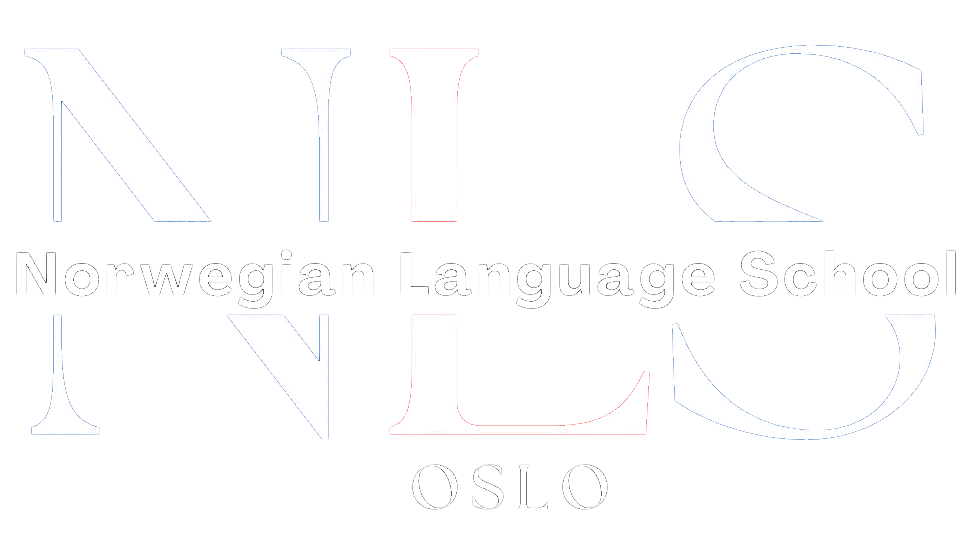Learning Norwegian phrases is essential for anyone who wants to have fluent conversations in the language. Whether you are planning to visit Norway, have Norwegian friends or family, or simply have an interest in the language and culture, being able to communicate effectively in Norwegian can greatly enhance your experience. In this article, we will explore the importance of learning Norwegian phrases and the benefits it can bring.
Being able to speak Norwegian opens up a world of opportunities. Norway is a beautiful country with a rich culture and history, and being able to communicate with the locals in their native language can greatly enhance your experience. It allows you to connect with people on a deeper level, understand their customs and traditions, and gain a greater appreciation for the country.
Table of Contents
ToggleKey Takeaways
- Norwegian phrases can help you have fluent conversations with locals.
- Greetings and pleasantries are important in Norwegian culture.
- Asking for and giving directions can be useful when traveling in Norway.
- Small talk and casual conversations can help you connect with Norwegians.
- Expressing opinions and sharing ideas can lead to interesting discussions in Norwegian.
Greetings and Pleasantries in Norwegian
When it comes to greetings and pleasantries in Norwegian, there are a few key phrases that you should know. The most common greeting is “Hei” which means “Hello” or “Hi”. It is a casual and friendly way to greet someone. Another common greeting is “God dag” which means “Good day”. This is a more formal greeting and is often used in professional settings or when meeting someone for the first time.
In response to these greetings, you can simply say “Hei” or “God dag” back. If you want to be more polite, you can add “Takk” which means “Thank you”. This shows that you appreciate the greeting and are acknowledging the other person’s kindness.
In different situations, there are also polite phrases that you can use. For example, if you want to apologize for something, you can say “Unnskyld” which means “Excuse me” or “I’m sorry”. If you want to thank someone, you can say “Takk” which means “Thank you”. These simple phrases can go a long way in making a good impression and showing respect.
Asking for Directions and Giving Directions in Norwegian
When traveling in Norway, it is important to know how to ask for directions and understand the responses. Some essential phrases for asking for directions in Norwegian include “Hvor er…?” which means “Where is…?” and “Kan du hjelpe meg?” which means “Can you help me?”. These phrases can be used when you are lost or looking for a specific place.
To understand and follow directions in Norwegian, it is helpful to know some basic vocabulary. For example, “venstre” means “left” and “høyre” means “right”. “Rett fram” means “straight ahead” and “tilbake” means “back”. By familiarizing yourself with these words, you will be able to understand the directions given to you.
When giving directions in Norwegian, it is important to be clear and concise. Use simple language and point out landmarks or notable features that can help the person find their way. For example, you can say “Gå rett fram til du ser en stor kirke” which means “Go straight ahead until you see a big church”. This will make it easier for the person to navigate their way.
Making Small Talk and Engaging in Casual Conversations in Norwegian
Small talk is an important part of social interactions in Norway. It helps to break the ice and establish a connection with others. When starting a conversation in Norwegian, it is helpful to have a few conversation starters in mind. You can ask about the weather by saying “Hvordan er været i dag?” which means “How is the weather today?”. You can also ask about someone’s day by saying “Hvordan har du det i dag?” which means “How are you today?”.
Common topics for small talk in Norway include sports, hobbies, and current events. Norwegians are passionate about outdoor activities such as skiing, hiking, and fishing, so asking about someone’s hobbies or interests in these areas can lead to interesting conversations. It is also common to discuss the latest news or events happening in Norway or around the world.
To express interest and ask follow-up questions in Norwegian, you can use phrases like “Virkelig?” which means “Really?” or “Interessant” which means “Interesting”. These phrases show that you are engaged in the conversation and want to learn more. By actively listening and asking questions, you can keep the conversation flowing and make a good impression.
Expressing Opinions and Sharing Ideas in Norwegian
Being able to express your opinions and share your ideas is an important skill in any language. In Norwegian, there are several vocabulary words that can help you express yourself clearly. For example, “Jeg synes” means “I think” and “Jeg mener” means “I believe”. These phrases can be used to introduce your opinion or idea.
When it comes to agreeing or disagreeing politely in Norwegian, there are a few phrases that can be helpful. If you agree with someone, you can say “Ja, det er jeg enig i” which means “Yes, I agree with that”. If you disagree, you can say “Jeg er ikke enig” which means “I don’t agree”. It is important to express your opinion respectfully and listen to others’ viewpoints.
To express yourself clearly in Norwegian, it is important to use proper grammar and sentence structure. Practice forming sentences and expressing your thoughts in a coherent manner. By doing so, you will be able to communicate effectively and engage in meaningful conversations.
Discussing Hobbies and Interests in Norwegian

Talking about hobbies and interests is a great way to connect with others and find common ground. In Norwegian, there are several vocabulary words that can help you talk about your hobbies and interests. For example, “Jeg liker å…” means “I like to…” and “Jeg er interessert ..” means “I am interested in…”. These phrases can be used to introduce your hobbies or interests.
When asking about someone’s hobbies and interests in Norwegian, you can use phrases like “Hva liker du å gjøre på fritiden?” which means “What do you like to do in your free time?” or “Hva er dine interesser?” which means “What are your interests?”. These questions show that you are interested in getting to know the person on a deeper level.
Common Norwegian pastimes and hobbies include outdoor activities such as skiing, hiking, and fishing. Norwegians also enjoy cultural activities such as visiting museums, attending concerts, and reading. By discussing these topics, you can learn more about Norwegian culture and find common interests with others.
Talking about Family and Relationships in Norwegian
Family is an important part of Norwegian culture, and talking about family is a common topic of conversation. In Norwegian, there are several vocabulary words that can help you discuss family and relationships. For example, “familie” means “family” and “søsken” means “siblings”. These words can be used to talk about your own family or ask about someone else’s.
When asking about someone’s family in Norwegian, you can use phrases like “Har du søsken?” which means “Do you have siblings?” or “Hvordan er familien din?” which means “How is your family?”. These questions show that you are interested in getting to know the person on a deeper level and learning more about their background.
Common Norwegian family traditions and customs include celebrating holidays together, spending time outdoors, and enjoying meals as a family. Norwegians also place a strong emphasis on equality and gender roles within the family. By discussing these topics, you can gain a greater understanding of Norwegian culture and values.
Ordering Food and Drinks in Norwegian
When dining out in Norway, it is important to know how to order food and drinks in Norwegian. Some essential phrases for ordering food and drinks include “Jeg vil gjerne ha…” which means “I would like to have…” and “Kan jeg få…?” which means “Can I have…?”. These phrases can be used to place your order at a restaurant or café.
To ask for recommendations in Norwegian, you can say “Hva anbefaler du?” which means “What do you recommend?” or “Hva er spesialiteten her?” which means “What is the specialty here?”. These questions show that you are open to trying new things and value the opinion of the person you are speaking with.
When describing food and drinks in Norwegian, it is helpful to know some basic vocabulary. For example, “kjøtt” means “meat” and “fisk” means “fish”. “Brød” means “bread” and “ost” means “cheese”. By familiarizing yourself with these words, you will be able to communicate your preferences and dietary restrictions.
Making Travel Arrangements and Booking Accommodations in Norwegian
If you are planning a trip to Norway, it is important to know how to make travel arrangements and book accommodations in Norwegian. Some essential vocabulary for making travel arrangements includes “fly” which means “flight” and “tog” which means “train”. “Billett” means “ticket” and “avgangstid” means “departure time”. By knowing these words, you will be able to navigate the transportation system more easily.
To book accommodations in Norwegian, you can use phrases like “Jeg vil gjerne bestille et rom” which means “I would like to book a room” or “Har dere ledige rom?” which means “Do you have any available rooms?”. These phrases can be used when calling a hotel or using an online booking platform.
When communicating with hotel staff in Norwegian, it is helpful to know some common phrases. For example, “Kan jeg få nøkkelen til rommet mitt?” means “Can I have the key to my room?” and “Hva er frokosttidene?” means “What are the breakfast times?”. By knowing these phrases, you will be able to navigate your stay more smoothly.
Saying Goodbye and Ending Conversations in Norwegian
When it is time to say goodbye and end a conversation in Norwegian, there are several polite phrases that you can use. Some common farewell phrases include “Ha det bra” which means “Take care” and “Vi snakkes” which means “We’ll talk”. These phrases show that you enjoyed the conversation and look forward to speaking again in the future.
To express gratitude and appreciation in Norwegian, you can say “Takk for hjelpen” which means “Thank you for your help” or “Tusen takk” which means “Thank you very much”. These phrases show that you value the other person’s assistance and are grateful for their support.
In conclusion, learning Norwegian phrases is essential for anyone who wants to have fluent conversations in the language. It allows you to connect with people on a deeper level, understand their customs and traditions, and gain a greater appreciation for the country. By familiarizing yourself with greetings and pleasantries, asking for directions, making small talk, expressing opinions, discussing hobbies and interests, talking about family and relationships, ordering food and drinks, making travel arrangements, and saying goodbye, you will be well-equipped to communicate effectively in Norwegian. So keep practicing and learning, and enjoy the journey of becoming fluent in Norwegian!









